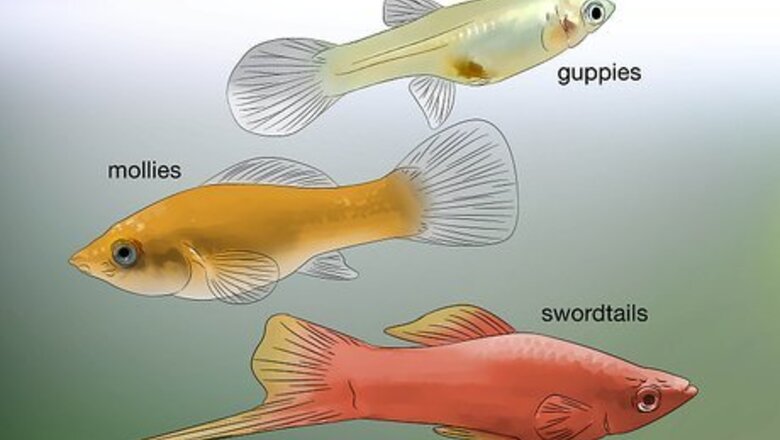
views
Identifying Pregnancy and Live Birth
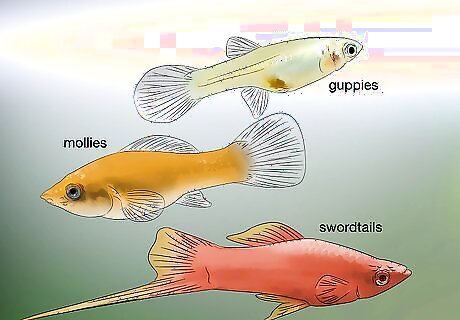
Use this method for live-bearing species. Guppies, mollies, swordtails, and platies are probably the most common live-bearing aquarium species. The males and females of these species mate, after which the females form eggs within their bodies. Over the course of a month or two (for most aquarium species), the eggs hatch into fish, and the mother gives birth. Search for the name of your species online to discover whether it is egg-bearing (oviparous) or live-bearing (viviparous).
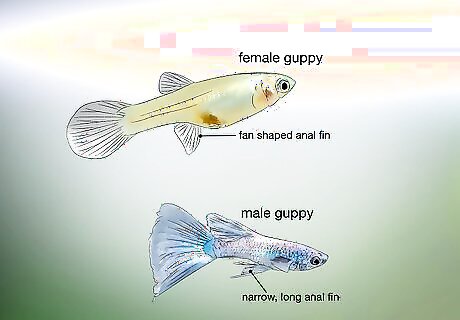
Identify the males and females. As a general rule, male fish of live-bearing species are brighter or more elaborately colored, and have a narrow, long anal fin on their lower side next to the tail. Females tend to be more drab, with a triangular or fan-shaped anal fin. If you can identify their sex, you'll have an easier time telling whether two fish are fighting (typically two males or two females), or whether they are mating or preparing to mate (one male and one female). Some species are more difficult to tell apart, and may require an expert from an aquarium store.

Look for mating rituals. Different fish species can behave very differently during pair-bonding, amplexus, and other mating-related behaviors. In many species, including most gouramis, the male chases the females around energetically, sometimes even causing scrapes, bites, or other damage. In others, such as discus, a male and a female will work together to defend one area of the tank from other fish. In either case, when actual mating occurs, this may involve the male and female gripping each other, turning upside down, wriggling around each other, or more subtle activities that are difficult to see.
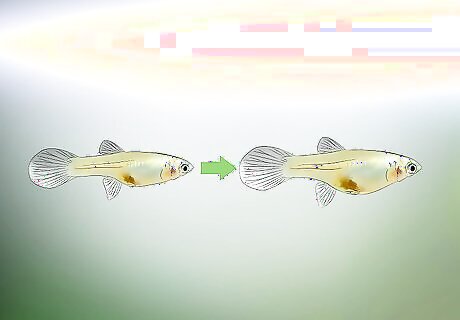
Check for a pregnancy bulge. The female fish will grow a bulge at the back of the abdomen. The abdomen typically grows over the course of 20–40 days, either into a large, rounded shape or a "boxy" shape. Some species such as balloon mollies have a natural bulge further forward, just below the gills. Overweight males may develop a bulge in the front chest. If you skip feedings for two or three days, an overweight bulge may shrink, while a female's pregnancy bulge will not.

Look for a red or black spot. Pregnant female fish often develop a "gravid spot" on the abdomen near the rear vent. This is typically black or bright red, and grows more pronounced over the course of the pregnancy. Some fish always have this spot, but it will typically grow brighter or darker during once the fish is pregnant.
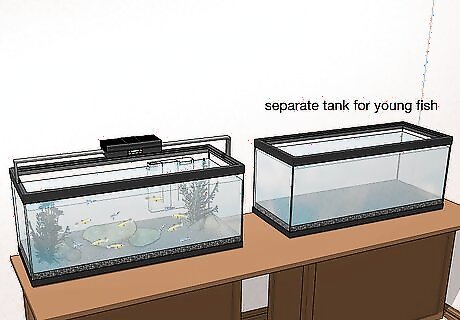
Decide how to prepare for the young fish. Raising young fish, or fry, can be extremely challenging, and usually requires an entire separate tank so the adults or water filter does not harm them. If you are not ready for the task, try contacting an aquarium store or an experienced aquarium hobbyist who might be willing to help you or take the fish from you. If you do decide to take care of the young, you can start with the section below on raising young, but researching your specific fish species as well is recommended.
Identifying Nesting and Egg-Laying
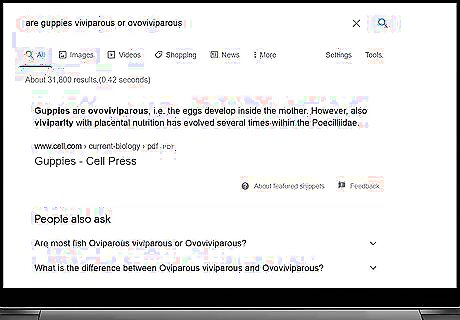
Use this method for egg-bearing species. Many aquarium fish are egg bearers, including discus fish, bettas, and most gourami species. The females of these species lay hundreds of eggs, usually in prepared nests on the floor, wall, or water surface. If there is a male in the same tank, he may fertilize the eggs after they are laid or by mating with the female beforehand, depending on the species. The eggs will eventually hatch into live fish. Look for your species name online to find out whether it lays eggs (oviparous species), or gives live birth (viviparous). The females of some fish species are able to store sperm for months before using it to fertilize eggs, so a new tank with females only can sometimes still reproduce.

Watch for signs of nesting. Some egg-laying fish create nesting areas to keep their eggs safe. These may look like small pits or gravel mounds, but they are not always visible. Some gouramis can create elaborate nests made from a mass of bubbles, usually created by the male along the water surface.
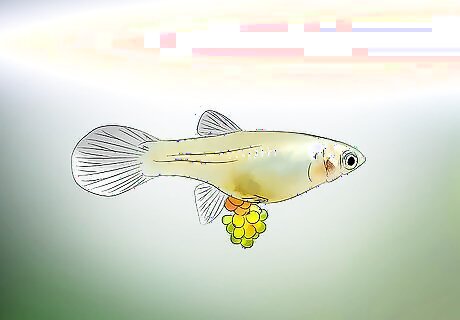
Check for eggs. Some females of this species bulge as eggs grow inside of them, but this is typically not a major change and doesn't last long. Once laid, the eggs often look like tiny balls of jelly. These are often scattered to the water, but in some species they end up in a mound on the nesting area, or stuck to the floor or side of the aquarium. Many egg-laying species also have mating rituals, including most gouramis. These are often energetic displays that can last up to a few hours, ending with the eggs being deposited.
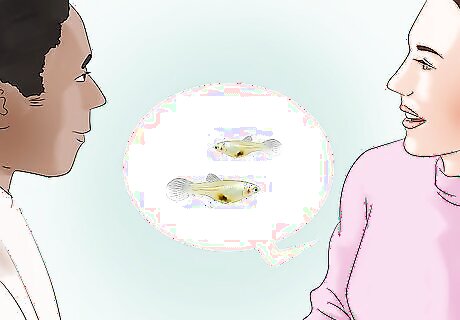
Prepare for the eggs to hatch. Caring for young fish, or fry, can be difficult, but even if caught unaware you'll have some time before the eggs hatch. Consult an aquarium store if you are interested in raising the fry yourself, since the process can vary by species. If you are caught unaware, refer to the section on raising young fish for basic advice, but do not assume the method will work perfectly for every fish species.
Raising Young Fish
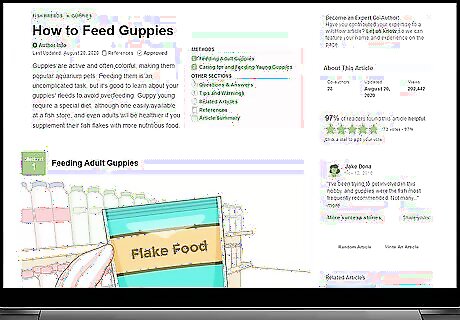
Research your species as much as possible. The instructions below can teach you the basics, and are useful emergency steps to take if your tank is suddenly full of young fish. However, taking care of young fish, or fry, is a real challenge, and the more you know about the traits of your specific species, the better. For more detail on a specific species, follow these guides for breeding and raising discus fish, gouramis, bettas, and guppies. Ask for advice from the employees at an aquarium store, or on aquarium hobbyist forums online. This is usually more helpful than advice from a general purpose pet store.
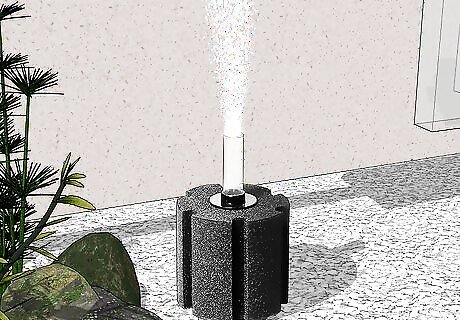
Replace the filter with a sponge filter. If you have a water filter that sucks in water or creates a current, turn it off and put in a sponge filter from an aquarium store instead. Otherwise, the current could exhaust the young fish or even suck them into the filter and kill them.

Separate the fish. Many fish breeders set up a completely new tank, and move the eggs or the young into it. However, if you aren't an experienced aquarium caretaker, it can be difficult to make a safe, stable water environment on short notice. Instead, you may use a plastic divider net from an aquarium store to separate the fish. Depending on species, the parents can be caretakers or predators, so try to find advice online that matches your fish. If you can't, decide how to separate based on the parental behavior: If the parents laid eggs in a nest and defended them from other fish, use the net to divide the parents and the eggs on one side, and the other fish on the others. If the mother had a live birth, or sprayed the eggs in the water, keep all adult fish on one side of the net. The young fish should swim through the net to hide from them.
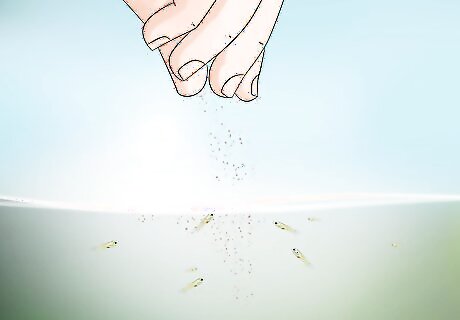
Feed the fish fry food. You can sometimes purchase a specialized "fry food" product from aquarium stores, but often you'll need to choose from an array of other options. Infusoria, liquid fish food, or rotifers are usually safe. However, as the fish grow, they may need additional food that can vary based on the species and size. Ask an aquarium store employee for advice based on your fish's species. If you can't get to an aquarium store, feed the young fry hard boiled egg yolk pushed through a cheesecloth.
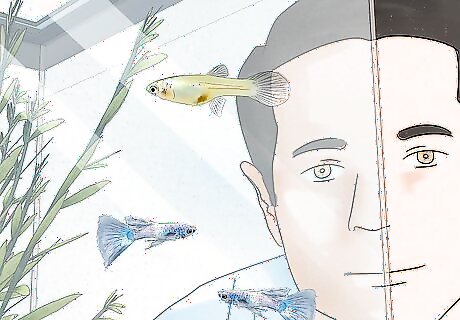
Plan how to care for them as adults. Set up another tank in advance if you plan to keep some of the fish. Otherwise, contact local aquarium stores and aquarium hobbyists in advance to arrange how to sell or give away your young fish once they reach a certain age.



















Comments
0 comment